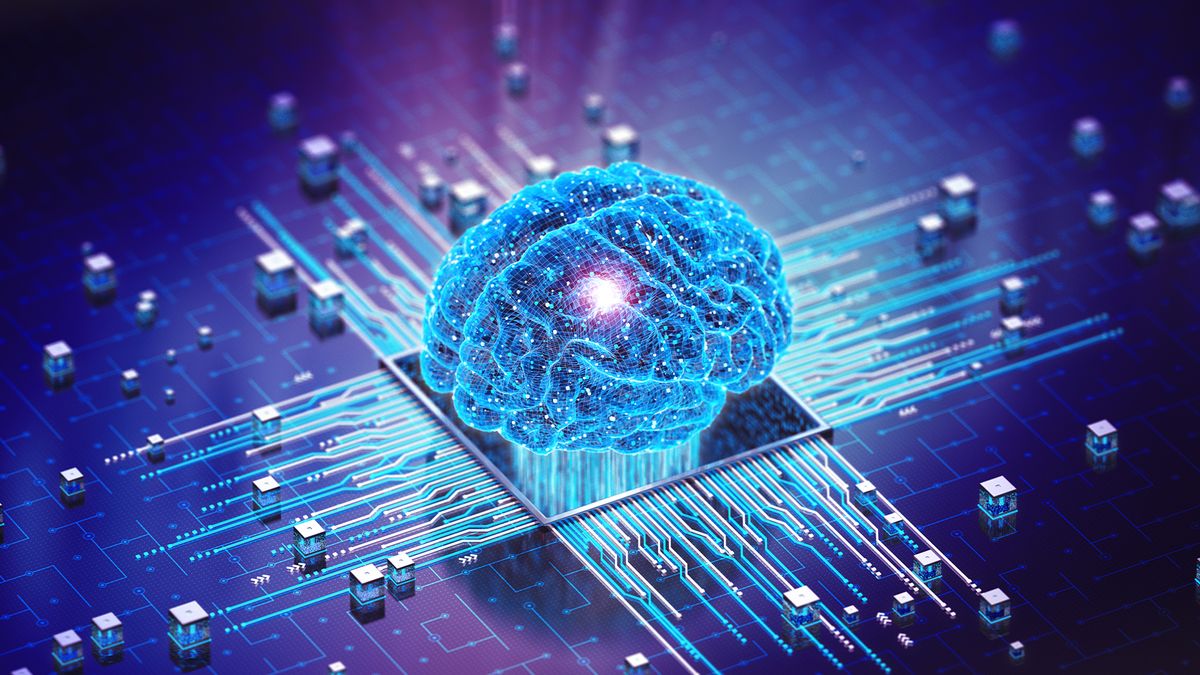Announced in 2016, Gym is an open-source Python library developed to assist in the development of support learning algorithms. It aimed to standardize how environments are defined in AI research study, making published research study more quickly reproducible [24] [144] while offering users with a simple interface for engaging with these environments. In 2022, brand-new developments of Gym have actually been transferred to the library Gymnasium. [145] [146]
Gym Retro

Released in 2018, Gym Retro is a platform for reinforcement learning (RL) research on computer game [147] using RL algorithms and research study generalization. Prior RL research focused mainly on enhancing representatives to solve single tasks. Gym Retro gives the capability to generalize in between video games with comparable principles but various looks.

RoboSumo

Released in 2017, RoboSumo is a virtual world where humanoid metalearning robotic representatives at first do not have knowledge of how to even walk, but are provided the objectives of discovering to move and to push the opposing agent out of the ring. [148] Through this adversarial learning process, the representatives find out how to adjust to changing conditions. When a representative is then eliminated from this virtual environment and put in a brand-new virtual environment with high winds, the representative braces to remain upright, recommending it had discovered how to stabilize in a generalized method. [148] [149] OpenAI's Igor Mordatch argued that competitors between agents could create an intelligence "arms race" that might increase a representative's capability to function even outside the context of the competition. [148]
OpenAI 5
OpenAI Five is a team of 5 OpenAI-curated bots used in the competitive five-on-five computer game Dota 2, that learn to play against human players at a high skill level entirely through experimental algorithms. Before becoming a team of 5, the very first public presentation happened at The International 2017, the yearly best champion tournament for the video game, where Dendi, an expert Ukrainian player, lost against a bot in a live one-on-one match. [150] [151] After the match, CTO Greg Brockman explained that the bot had discovered by playing against itself for 2 weeks of actual time, which the knowing software was an action in the direction of developing software application that can handle intricate jobs like a surgeon. [152] [153] The system utilizes a type of support knowing, as the bots find out in time by playing against themselves hundreds of times a day for months, and are rewarded for actions such as eliminating an enemy and taking map goals. [154] [155] [156]
By June 2018, the capability of the bots expanded to play together as a complete group of 5, and they had the ability to defeat groups of amateur and semi-professional gamers. [157] [154] [158] [159] At The International 2018, OpenAI Five played in 2 exhibit matches against expert players, but ended up losing both games. [160] [161] [162] In April 2019, OpenAI Five defeated OG, the ruling world champs of the game at the time, 2:0 in a live exhibition match in San Francisco. [163] [164] The bots' final public appearance came later on that month, where they played in 42,729 overall video games in a four-day open online competition, winning 99.4% of those video games. [165]
OpenAI 5's systems in Dota 2's bot gamer reveals the obstacles of AI systems in multiplayer online battle arena (MOBA) video games and how OpenAI Five has shown using deep support knowing (DRL) agents to attain superhuman competence in Dota 2 matches. [166]
Dactyl
Developed in 2018, Dactyl utilizes maker discovering to train a Shadow Hand, a human-like robot hand, to control physical things. [167] It discovers totally in simulation utilizing the very same RL algorithms and training code as OpenAI Five. OpenAI tackled the things orientation problem by utilizing domain randomization, a simulation approach which exposes the student to a range of experiences rather than attempting to fit to reality. The set-up for Dactyl, aside from having motion tracking electronic cameras, likewise has RGB electronic cameras to allow the robotic to manipulate an approximate things by seeing it. In 2018, OpenAI revealed that the system had the ability to control a cube and an octagonal prism. [168]
In 2019, OpenAI showed that Dactyl could resolve a Rubik's Cube. The robotic was able to fix the puzzle 60% of the time. Objects like the Rubik's Cube present complicated physics that is harder to design. OpenAI did this by improving the effectiveness of Dactyl to perturbations by utilizing Automatic Domain Randomization (ADR), a simulation technique of generating progressively harder environments. ADR varies from manual domain randomization by not needing a human to specify randomization ranges. [169]
API
In June 2020, OpenAI announced a multi-purpose API which it said was "for accessing brand-new AI designs established by OpenAI" to let designers contact it for "any English language AI task". [170] [171]
Text generation
The business has popularized generative pretrained transformers (GPT). [172]
OpenAI's initial GPT design ("GPT-1")
The original paper on generative pre-training of a transformer-based language model was composed by Alec Radford and his coworkers, and released in preprint on OpenAI's website on June 11, 2018. [173] It demonstrated how a generative model of language could obtain world understanding and process long-range dependencies by pre-training on a varied corpus with long stretches of contiguous text.
GPT-2
Generative Pre-trained Transformer 2 ("GPT-2") is a without supervision transformer language design and the successor to OpenAI's original GPT model ("GPT-1"). GPT-2 was revealed in February 2019, with only limited demonstrative variations at first launched to the public. The full variation of GPT-2 was not right away released due to issue about possible abuse, including applications for writing phony news. [174] Some professionals revealed uncertainty that GPT-2 posed a substantial threat.
In response to GPT-2, the Allen Institute for Artificial Intelligence responded with a tool to detect "neural phony news". [175] Other researchers, such as Jeremy Howard, alerted of "the innovation to completely fill Twitter, email, and the web up with reasonable-sounding, context-appropriate prose, which would hush all other speech and be difficult to filter". [176] In November 2019, OpenAI released the complete version of the GPT-2 language model. [177] Several websites host interactive demonstrations of various instances of GPT-2 and other transformer designs. [178] [179] [180]
GPT-2's authors argue without supervision language models to be general-purpose learners, illustrated by GPT-2 attaining advanced accuracy and perplexity on 7 of 8 zero-shot tasks (i.e. the model was not further trained on any task-specific input-output examples).
The corpus it was trained on, called WebText, contains somewhat 40 gigabytes of text from URLs shared in Reddit submissions with at least 3 upvotes. It avoids certain concerns encoding vocabulary with word tokens by using byte pair encoding. This permits representing any string of characters by encoding both individual characters and multiple-character tokens. [181]
GPT-3
First explained in May 2020, Generative Pre-trained [a] Transformer 3 (GPT-3) is a not being watched transformer language design and wiki.vst.hs-furtwangen.de the successor to GPT-2. [182] [183] [184] OpenAI stated that the complete version of GPT-3 contained 175 billion criteria, [184] two orders of magnitude larger than the 1.5 billion [185] in the full version of GPT-2 (although GPT-3 models with as few as 125 million specifications were likewise trained). [186]
OpenAI specified that GPT-3 succeeded at certain "meta-learning" tasks and might generalize the function of a single input-output pair. The GPT-3 release paper gave examples of translation and cross-linguistic transfer learning between English and Romanian, and in between English and German. [184]
GPT-3 significantly improved benchmark outcomes over GPT-2. OpenAI cautioned that such scaling-up of language designs might be approaching or experiencing the essential ability constraints of predictive language designs. [187] Pre-training GPT-3 needed numerous thousand petaflop/s-days [b] of calculate, compared to 10s of petaflop/s-days for the full GPT-2 model. [184] Like its predecessor, [174] the GPT-3 trained model was not right away released to the public for issues of possible abuse, although OpenAI prepared to permit gain access to through a paid cloud API after a two-month free personal beta that started in June 2020. [170] [189]
On September 23, 2020, GPT-3 was licensed exclusively to Microsoft. [190] [191]
Codex
Announced in mid-2021, Codex is a descendant of GPT-3 that has actually furthermore been trained on code from 54 million GitHub repositories, [192] [193] and is the AI powering the code autocompletion tool GitHub Copilot. [193] In August 2021, an API was launched in personal beta. [194] According to OpenAI, the model can develop working code in over a dozen shows languages, most successfully in Python. [192]
Several problems with glitches, design defects and security vulnerabilities were cited. [195] [196]
GitHub Copilot has actually been implicated of discharging copyrighted code, without any author attribution or license. [197]
OpenAI revealed that they would stop assistance for Codex API on March 23, 2023. [198]
GPT-4
On March 14, 2023, OpenAI revealed the release of Generative Pre-trained Transformer 4 (GPT-4), efficient in accepting text or image inputs. [199] They announced that the upgraded innovation passed a simulated law school bar test with a score around the leading 10% of test takers. (By contrast, GPT-3.5 scored around the bottom 10%.) They said that GPT-4 could also check out, evaluate or produce as much as 25,000 words of text, and write code in all significant shows languages. [200]
Observers reported that the version of ChatGPT using GPT-4 was an enhancement on the previous GPT-3.5-based version, with the caveat that GPT-4 retained a few of the problems with earlier modifications. [201] GPT-4 is also efficient in taking images as input on ChatGPT. [202] OpenAI has actually decreased to reveal numerous technical details and stats about GPT-4, such as the exact size of the design. [203]
GPT-4o
On May 13, 2024, OpenAI announced and launched GPT-4o, which can process and produce text, images and audio. [204] GPT-4o attained cutting edge lead to voice, multilingual, and vision benchmarks, setting new records in audio speech recognition and translation. [205] [206] It scored 88.7% on the Massive Multitask Language Understanding (MMLU) standard compared to 86.5% by GPT-4. [207]
On July 18, 2024, OpenAI launched GPT-4o mini, a smaller sized variation of GPT-4o changing GPT-3.5 Turbo on the ChatGPT user interface. Its API costs $0.15 per million input tokens and $0.60 per million output tokens, compared to $5 and $15 respectively for GPT-4o. OpenAI anticipates it to be particularly helpful for enterprises, startups and developers seeking to automate services with AI agents. [208]
o1
On September 12, 2024, OpenAI launched the o1-preview and o1-mini models, which have actually been developed to take more time to believe about their actions, resulting in higher precision. These designs are particularly reliable in science, coding, and thinking jobs, and were made available to ChatGPT Plus and Employee. [209] [210] In December 2024, o1-preview was changed by o1. [211]
o3
On December 20, 2024, OpenAI revealed o3, the follower of the o1 reasoning design. OpenAI likewise revealed o3-mini, a lighter and much faster variation of OpenAI o3. Since December 21, 2024, this model is not available for public use. According to OpenAI, they are evaluating o3 and o3-mini. [212] [213] Until January 10, 2025, security and security scientists had the chance to obtain early access to these models. [214] The design is called o3 instead of o2 to avoid confusion with telecommunications companies O2. [215]
Deep research study
Deep research study is an agent developed by OpenAI, revealed on February 2, 2025. It leverages the abilities of OpenAI's o3 design to carry out comprehensive web browsing, data analysis, and synthesis, providing detailed reports within a timeframe of 5 to 30 minutes. [216] With browsing and Python tools made it possible for, it reached an accuracy of 26.6 percent on HLE (Humanity's Last Exam) standard. [120]
Image classification
CLIP
Revealed in 2021, CLIP (Contrastive Language-Image Pre-training) is a model that is trained to examine the semantic resemblance between text and images. It can significantly be utilized for image classification. [217]
Text-to-image
DALL-E
Revealed in 2021, DALL-E is a Transformer design that develops images from textual descriptions. [218] DALL-E uses a 12-billion-parameter version of GPT-3 to analyze natural language inputs (such as "a green leather purse formed like a pentagon" or "an isometric view of a sad capybara") and create corresponding images. It can develop pictures of reasonable things ("a stained-glass window with an image of a blue strawberry") as well as objects that do not exist in reality ("a cube with the texture of a porcupine"). As of March 2021, no API or code is available.
DALL-E 2
In April 2022, OpenAI revealed DALL-E 2, an updated variation of the model with more reasonable outcomes. [219] In December 2022, OpenAI released on GitHub software for Point-E, a brand-new primary system for converting a text description into a 3-dimensional design. [220]
DALL-E 3
In September 2023, OpenAI announced DALL-E 3, a more effective design better able to create images from complex descriptions without manual timely engineering and render complex details like hands and text. [221] It was released to the general public as a ChatGPT Plus function in October. [222]
Text-to-video
Sora
Sora is a text-to-video design that can create videos based upon brief detailed prompts [223] along with extend existing videos forwards or in reverse in time. [224] It can generate videos with resolution approximately 1920x1080 or 1080x1920. The optimum length of generated videos is unknown.
Sora's advancement group called it after the Japanese word for "sky", to represent its "unlimited innovative potential". [223] Sora's innovation is an adjustment of the innovation behind the DALL · E 3 text-to-image design. [225] OpenAI trained the system using publicly-available videos along with copyrighted videos licensed for that function, but did not expose the number or the exact sources of the videos. [223]
OpenAI demonstrated some Sora-created high-definition videos to the general public on February 15, 2024, specifying that it could generate videos approximately one minute long. It also shared a technical report highlighting the approaches used to train the model, and the design's abilities. [225] It acknowledged some of its imperfections, including battles imitating intricate physics. [226] Will Douglas Heaven of the MIT Technology Review called the demonstration videos "impressive", but kept in mind that they should have been cherry-picked and might not represent Sora's normal output. [225]
Despite uncertainty from some scholastic leaders following Sora's public demo, notable entertainment-industry figures have actually revealed considerable interest in the technology's capacity. In an interview, actor/filmmaker Tyler Perry expressed his astonishment at the technology's ability to create reasonable video from text descriptions, mentioning its possible to reinvent storytelling and content development. He said that his excitement about Sora's possibilities was so strong that he had decided to stop briefly plans for genbecle.com broadening his Atlanta-based film studio. [227]
Speech-to-text
Whisper
Released in 2022, Whisper is a general-purpose speech recognition design. [228] It is trained on a large dataset of varied audio and is also a multi-task model that can perform multilingual speech acknowledgment along with speech translation and language recognition. [229]
Music generation
MuseNet
Released in 2019, MuseNet is a deep neural net trained to anticipate subsequent musical notes in MIDI music files. It can create tunes with 10 instruments in 15 designs. According to The Verge, a song produced by MuseNet tends to begin fairly however then fall into mayhem the longer it plays. [230] [231] In pop culture, initial applications of this tool were used as early as 2020 for higgledy-piggledy.xyz the web psychological thriller Ben Drowned to produce music for the titular character. [232] [233]
Jukebox
Released in 2020, Jukebox is an open-sourced algorithm to generate music with vocals. After training on 1.2 million samples, the system accepts a category, artist, and larsaluarna.se a bit of lyrics and outputs tune samples. OpenAI specified the tunes "reveal local musical coherence [and] follow conventional chord patterns" however acknowledged that the songs do not have "familiar larger musical structures such as choruses that duplicate" and that "there is a significant gap" in between Jukebox and wiki.snooze-hotelsoftware.de human-generated music. The Verge specified "It's technically impressive, even if the outcomes seem like mushy variations of tunes that may feel familiar", while Business Insider mentioned "surprisingly, some of the resulting songs are catchy and sound legitimate". [234] [235] [236]
User user interfaces
Debate Game

In 2018, OpenAI released the Debate Game, which teaches makers to discuss toy issues in front of a human judge. The purpose is to research whether such a method might assist in auditing AI decisions and in developing explainable AI. [237] [238]
Microscope

Released in 2020, Microscope [239] is a collection of visualizations of every significant layer and nerve cell of eight neural network designs which are often studied in interpretability. [240] Microscope was developed to examine the functions that form inside these neural networks easily. The models included are AlexNet, VGG-19, higgledy-piggledy.xyz various variations of Inception, and different versions of CLIP Resnet. [241]
ChatGPT
Launched in November 2022, ChatGPT is an expert system tool built on top of GPT-3 that supplies a conversational interface that allows users to ask concerns in natural language. The system then reacts with a response within seconds.




